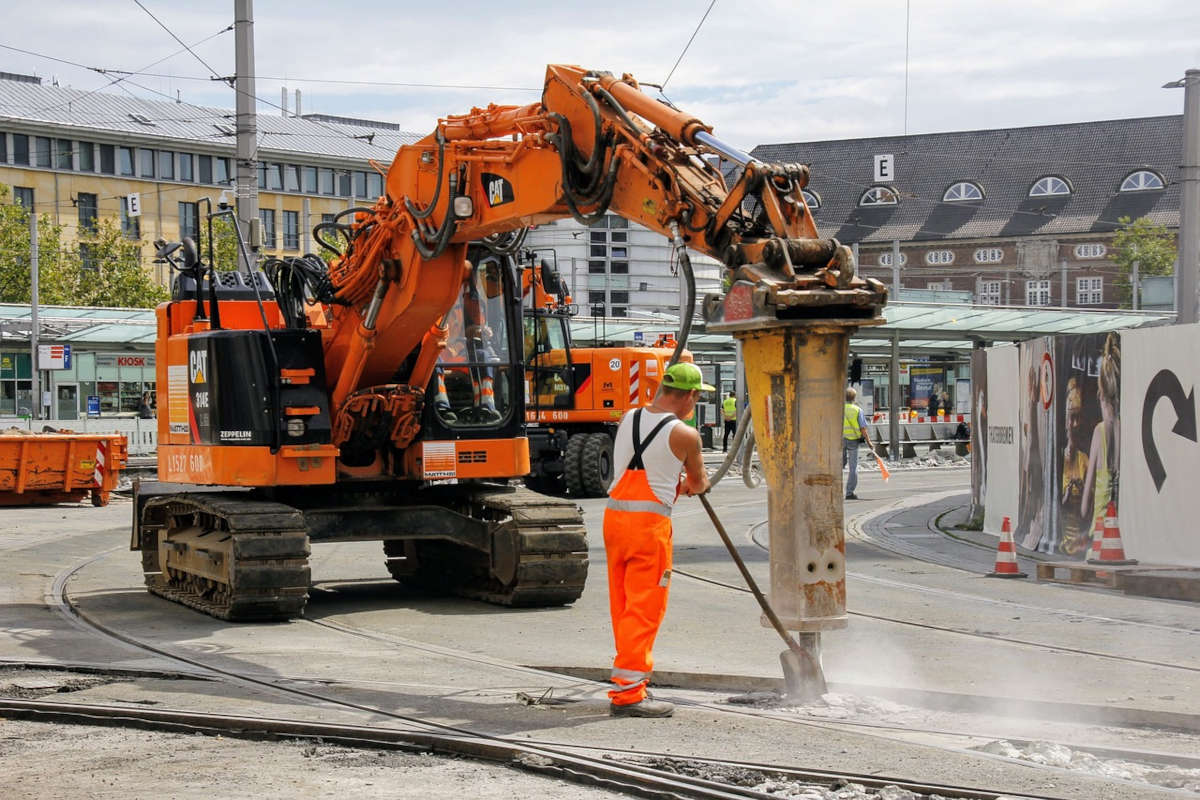What Is Excavation?
Excavation is a critical step in any construction project. It removes earth, rock, or other materials to create space for foundations, roads, or other structures. It employs various techniques and tools to achieve this goal efficiently and safely. When discussing excavation, it is essential to understand the comprehensive process and its applications in modern infrastructure. `Excavation is indispensable for everything from large-scale industrial constructions to smaller residential projects. Companies and contractors rely on specialized machinery and skilled labor to ensure excavation is performed accurately and safely, adhering to project requirements and environmental regulations. The process begins with careful planning and surveying to identify soil types, underground utilities, and other critical factors. The goal is to prepare the site for the following stages of construction, ensuring stability and longevity.
Importance in Infrastructure Development
Excavation provides a stable foundation for nearly all construction projects. Adequate ground preparation is critical for the durability and safety of the structure. Proper excavation ensures that the foundation is free from debris, water, and unstable soil, which can compromise the structure’s integrity. Structures may experience foundational problems without adequate excavation that present safety risks and require expensive repairs. Therefore, excavation is essential to constructing infrastructure since it guarantees the dependability and safety of projects. To withstand environmental conditions, they need a strong foundation for roads, bridges, buildings, and other infrastructure elements. An essential first stage in any project, excavation clears the way for construction by removing barriers and preparing the ground.
Tools and Techniques Used in Excavation
Various excavation tools and techniques are employed to streamline the process and make it more effective. Traditional tools like shovels and pickaxes are now supplemented with advanced machinery such as:
- Bulldozers: Used for pushing large amounts of soil, rocks, and debris.
- Excavators: Equipped with buckets to dig and move materials.
- Backhoes: Versatile machines used for digging and trenching.
- Trenchers: Specialized for creating narrow trenches for utilities and cables.
Techniques like trenching, dredging, and tunneling are essential in managing different excavation needs. Trenching is commonly used for laying utilities while dredging is employed for underwater projects. Tunneling creates passages through mountains or underground. The constant evolution of technology has increased the efficiency of these techniques and made them safer and more environmentally friendly. Advanced GPS systems and real-time monitoring have further enhanced accuracy, reducing the margin of error.
Safety Measures in Excavation
Ensuring safety measures in excavation is paramount to prevent accidents and project delays. Standard safety practices include:
- Shoring: Supporting the walls of an excavation to prevent collapse. This is achieved using hydraulic or mechanical systems that hold the soil in place.
- Shielding: Using protective systems to safeguard workers. Trench boxes or shields are placed in excavations to protect workers from cave-ins.
- Sloping involves creating inclined walls to improve stability. This method reduces the risk of soil sliding or collapsing into the excavation site.
Additionally, thorough planning and risk assessments are fundamental to safe excavation. Implementing these measures significantly reduces the occurrence of accidents. Supervisors and safety officers should regularly inspect the site, ensuring all safety protocols are followed. Training workers on safety practices and emergency procedures foster a safety and vigilance culture.
Environmental Considerations
While excavation is necessary, its environmental impact must be noticed. As referenced in the EPA guidelines, responsible practices and adherence to environmental regulations are essential in mitigating adverse effects. Soil erosion, water contamination, and habitat disruption are common concerns that need careful management. Common environmental concerns include soil erosion, which can lead to loss of fertile land and increased sediment in water bodies. Water contamination occurs when harmful substances are released during excavation, affecting groundwater and local ecosystems. Habitat disruption can displace wildlife and affect biodiversity. Employing sustainable practices and advanced technologies can minimize these impacts, ensuring the project remains environmentally friendly. Techniques such as erosion control, sediment barriers, and proper waste disposal are crucial in preserving the environment.
Future Trends in Excavation
The future of excavation is geared towards sustainability and technological advancements. Innovations like autonomous machinery, advanced GPS systems, and real-time monitoring are rapidly becoming industry standards. These developments increase efficiency, enhance safety, and reduce environmental impact. Autonomous machinery, for instance, reduces human error and increases precision, while GPS systems provide accurate mapping and monitoring of the excavation site. The drive towards more sustainable practices is also evident, with more projects aiming to minimize their ecological footprint through careful planning and execution. Using eco-friendly materials, recycling excavated materials, and adopting green technologies are trends set to shape the future of excavation. Education and continuous training for professionals in the industry will be vital in embracing these advancements and ensuring compliance with evolving regulations.
Conclusion
Excavation is a cornerstone of modern infrastructure development. Its significance is unparalleled, from laying solid foundations to ensuring safety and efficiency. As technology and sustainable practices evolve, the excavation field will undoubtedly advance, meeting the growing demands of contemporary construction projects. Integrating innovative technologies and adherence to safety and environmental standards will pave the way for a more efficient and responsible construction industry.

